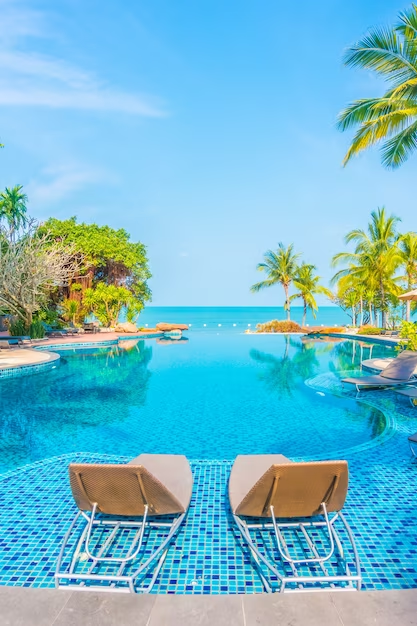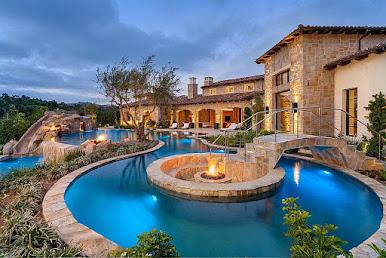A Comprehensive Look at Swimming Pool and Spa Safety, and Pool Fencing Regulations in Victoria
The Importance of Swimming Pool and Spa Safety
The joy and relaxation that a swimming pool and spa safety can bring to a household are unparalleled. However, these aquatic features also pose potential risks, especially when it comes to the safety of children and non-swimmers. According to the Royal Life Saving National Drowning Report, home swimming pools are a significant location for drowning incidents in Australia. To mitigate these risks, the Victorian government has implemented rigorous safety standards and regulations that homeowners must adhere to.
Pool Safety Inspections
Pool safety inspections play a crucial role in ensuring that swimming pools and spas meet the stipulated safety standards. These inspections are carried out by qualified pool inspectors who assess various elements, including the pool barrier, gates, and surrounding areas. The primary objective is to identify and rectify any potential hazards that may pose a threat to the safety of individuals using or residing near the pool.
 |
| Swimming Pool and spa safety |
Qualified Pool Inspectors: The Guardians of Safety
Pool inspectors are trained professionals responsible for evaluating the compliance of swimming pools and spas with safety regulations. In Victoria, these inspectors undergo specialized training to acquire the necessary skills and knowledge to perform thorough safety assessments. Homeowners can engage the services of certified pool inspectors to conduct regular pool safety inspections and ensure that their pool or spa meets the required safety standards.
The Inspection Process
A typical pool safety inspection involves a detailed examination of various components to ensure compliance with safety regulations. The key areas assessed include:
1. Pool Barriers and Fencing: The integrity and effectiveness of pool barriers and fencing are crucial in preventing unauthorized access, particularly by children. Inspectors check for any gaps, damage, or non-compliance with height and material requirements.
2. Gate Functionality: Pool gates are subject to close scrutiny during inspections. They must be self-closing and self-latching to prevent unintended entry. Inspectors assess the gate's ability to latch securely to hinder easy opening.
3. CPR Signage: Clear and visible signage with cardiopulmonary resuscitation (CPR) instructions must be displayed near the pool area. This ensures that individuals are informed about emergency procedures in the event of an incident.
4. Surrounding Areas:The inspection extends to the pool's immediate surroundings, checking for potential hazards or objects that may facilitate climbing over the barrier.
5. Water Clarity and Quality: While not directly related to the physical structure, inspectors may also assess the water quality to ensure it meets health and safety standards.
Non-Compliance Consequences
Failure to comply with pool safety regulations in Victoria can result in severe consequences. Homeowners who do not meet the required safety standards may face fines and penalties. Additionally, local authorities have the power to issue non-compliance notices, requiring prompt rectification of identified issues. Continuous non-compliance may even lead to the closure of the swimming pool or spa until the necessary safety measures are implemented.
Pool Fencing Regulations in Victoria
The Victorian Building Authority (VBA) has established specific regulations regarding pool fencing to enhance safety. These regulations are designed to minimize the risk of drowning and ensure that all swimming pools and spas are adequately secured. Some key aspects of pool fencing regulations Vic in include:
1. Fence Height: The minimum height of a pool fence in Victoria is 1.2 meters. This height is deemed sufficient to prevent easy access, especially for young children.
2. Gaps and Openings: Pool fences must not have any gaps or openings that could allow a small child to pass through. The regulations specify maximum gap dimensions to ensure compliance.
3. Climbable Objects: Objects near the pool fence that could facilitate climbing, such as furniture or trees, must be kept at a safe distance. This prevents individuals from bypassing the fence by climbing over nearby structures.
4. Gate Requirements: Pool gates must be self-closing and self-latching, ensuring that they automatically close and latch after each use. The latch should be positioned out of the reach of young children.
5. Materials and Construction: The materials used for pool fencing must be durable and capable of withstanding environmental conditions. Proper construction is essential to maintain the fence's integrity over time.
Educating Homeowners: A Shared Responsibility
While pool inspectors play a pivotal role in ensuring safety compliance, educating homeowners about pool safety is equally important. Homeowners should be aware of their responsibilities in maintaining a safe pool or spa environment. Regular communication and dissemination of safety guidelines can contribute to a collective effort in preventing accidents and tragedies.
Owning a swimming pool or spa is a luxury that comes with responsibilities. In Victoria, Australia, stringent regulations and safety standards are in place to protect individuals, especially children, from the potential hazards associated with these aquatic features. Pool safety inspections conducted by qualified inspectors are instrumental in identifying and rectifying safety issues. Complying with pool fencing regulations is not just a legal obligation but a moral responsibility to ensure the well-being of those enjoying these amenities. As guardians of safety, homeowners, pool inspectors, and regulatory authorities must work hand in hand to create a secure environment where the pleasures of a pool or spa can be enjoyed without compromising safety.



Comments
Post a Comment